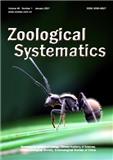| 投稿方式:Email投稿,官网投稿,纸质投稿 |
- 栏目频次
- 单位占比
-
热词

中频栏目
低频栏目
-
更多
期刊简介
- 《动物分类学报(英文版)》(季刊)创刊于1964年,是由中国科学院动物研究所、中国动物学会、中国昆虫学会主办的定期学术性期刊,国内外公开发行。内容涵盖:动物系统进化及分类理论、区系渊源的探讨,新技术、新方法在分类学上的应用,动物地理学研究,学科发展综述等方面的论文或文章。促进国际交流,欢迎英文撰稿。本刊系基础理性学报,对我国动物学基础理论的建设以及世界资源的调查和利用起到了重要的作用,填补了国内外动物资源的空白,为编写中国动物志、动物地区资源调查、动物地理区划、生物多样性等研究提供了不可缺少的确材料,为科研工作者进行动物的生物学、生态学、医学昆虫及保护利用研究奠定了基础。本刊在国内外颇具影响,与30余个国家和地区的图书馆建立了交换关系,被国内外文献中心及数据库收录。本刊是动物学领域中一本重要的科技文献,学术水平高,作者发表的论文多次在省部级等各项.的评奖活动中获奖。在期刊的评比活动中,曾获科协三等奖,北京市优秀期刊奖。
-
基本信息
- 期刊名称:动物分类学报(英文版)(Zoological Systematics)
- 主管单位:中国科学院
- 主办单位:中国科学院动物研究所;中国动物学会;中国昆虫学会
- 国内刊号:CN 10-1160/Q
- 国际刊号:ISSN 2095-6827
-
- 出刊日期:
- 期刊定价:
-
- 邮发代码:
-
- 所在省区:北京
- 邮政编码:100101
- 联系地址:北京市朝阳区北辰西路1号院中国科学院动物所
-
投稿信息
-
- 学科分类:生物科学
- 版面费用:待核实
-
- 字数要求:6000-34000
- 查重要求:-
-
- 复合因子:0.26
- 综合因子:0.26
-
- 审 稿 费:待核实
- 稿费:待核实
- 本刊可发:
- 特殊属性:外文期刊
-
联系方式
- 投稿网址:https://mc03.manuscriptcentral.com/zoosys
- 官网网址:http://www.zootax.com.cn
- 电话传真:010-64807167(202402期)
- 电子邮箱:dwfl@ioz.ac.cn(202402期)
- 微信公众号:

